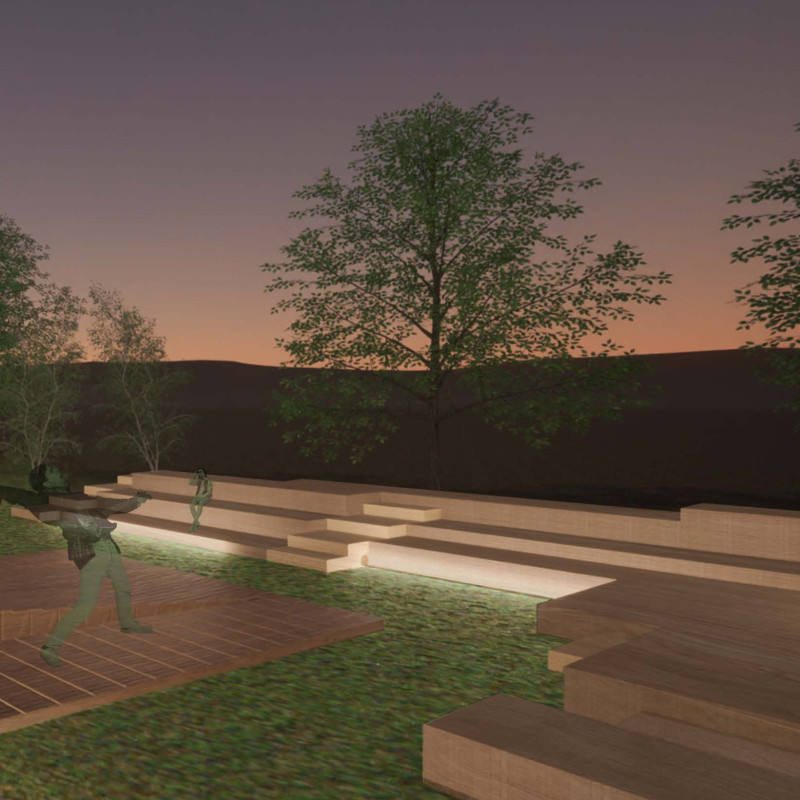5 key facts about this project
The design of the project encourages interaction and connectivity among its users, effectively catering to its primary function as a multi-use space. This adaptive nature allows the architecture to host various activities, fostering a sense of community. The open layout is intentional, facilitating smooth transitions between different areas and encouraging social interactions. Natural light floods the interiors through strategically placed windows, creating an inviting ambiance that enhances the overall user experience.
Materials play a crucial role in the architectural design, with a blend of durable and sustainable options favored for their environmental impact and aesthetic appeal. The use of high-strength concrete and reclaimed timber not only provides durability but also reflects a conscious effort to minimize environmental footprints. Low-emissivity glass is utilized to improve energy efficiency, allowing for ample natural light while regulating temperature within the building. The thoughtful selection of materials demonstrates an understanding of both practicality and the need for an inviting environment.
Unique design approaches are evident throughout the project, particularly in its response to environmental considerations and local culture. The architecture incorporates green roofs and living walls, which not only improve biodiversity but also enhance insulation and air quality. This innovative use of landscaping integrates nature into the built environment, providing a refreshing contrast to the urban landscape. Furthermore, the design takes cues from local architectural styles, ensuring that it resonates with its geographical context rather than imposing an alien presence.
The strategic layout includes community spaces that serve as hubs for social interaction, promoting a collaborative spirit among users. These areas are designed to be flexible, allowing for various configurations depending on the activities they host. The incorporation of outdoor spaces encourages users to engage with nature and promotes wellness through access to green areas.
Moreover, the project features advanced technology within its infrastructure, including energy-efficient systems that reduce overall consumption and enhance user comfort. The architectural design aligns with sustainable development principles, demonstrating a forward-thinking approach to modern building practices. The thoughtful integration of smart technologies not only improves functionality but also sets a precedent for future architectural endeavors in the region.
This architecture is a testament to the power of thoughtful design, showcasing how buildings can harmoniously coexist with their environment while catering to the needs of the community. By prioritizing user experience, sustainability, and a connection to local culture, the project stands out as a valuable addition to the urban fabric.
For those interested in exploring the nuances of this project further, reviewing the architectural plans, sections, designs, and innovative ideas presented in the project would provide invaluable insights. Understanding how each element plays a role in the overall vision can enhance appreciation for the thoughtful strategies employed in this architectural endeavor.


























